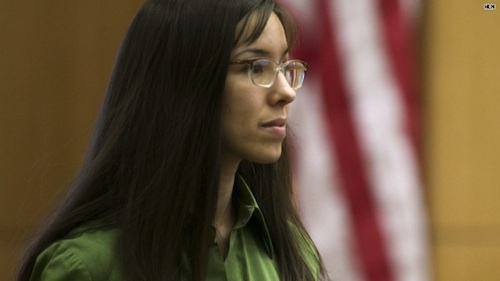Suzanne Basso was executed last night in Texas — by lethal injection, but not by the trial version of lethal injection — thus becoming the 14th woman executed since 1976, and only the fourth since 2002 (about 12 years), three of those having happened in Texas (the state does itself no favors reputation-wise on the capital punishment front). You can read about what she did — it’s terrible, as you’d expect, since someone eventually sentenced her to death — but the key quote of the article is probably really this:
Women account for about 10% of murder arrests but only represent 2.1% of death sentences imposed at trial and less than 1% of completed executions, according to the Death Penalty Information Center.
Interesting. So, check this out: Texas is by far the most active death-penalty state. Since 1976, when the punishment was restored, Lone Star has executed 510 people. 505 have been men. Is there a gender bias in assignment to death?
There could be, but the entire thing is contextual. Female trials sometimes tend to get more attention — think Jodi Arias — because there’s a notion of someone who snapped, or a sexualized component, or whatever. Male murder trials tend to be a little bit more formulaic and gruesome, and typically lawyers are running everywhere arguing for a mental defect. The method in which women kill, when they do, typically isn’t connected to the methods that will get someone a death penalty conviction:
“Juries are a little more reluctant to mete out the death penalty to a woman than a man,” Andy Silverman, a law professor at the University of Arizona and a member of the Coalition of Arizonans to Abolish the Death Penalty, told Reuters.
“We don’t look at women as being as violent … We don’t think of death row as a place for them,” he added.
Nationally, more than 1,300 inmates have been executed since 1976 – only 12 of these were women.
“It’s not necessarily [just] a gender bias,” Dieter said. “Even though women commit murder, they rarely commit torture murder, or serial killings, or kidnap murders, or multiple murders in their life.”
But, he said, women’s cases are more often overturned or granted clemency.
This gets interesting here: in a 2011 study, two lawyers reviewed 1,300 murder cases between 2003 and 2005 and do believe that a gender bias exists in sentencing, and — here’s the kicker — do believe it has roots in historic notions of chivalry. So, a female can do something as heinous as a man, but because of our prescribed gender assignations, the woman is significantly more likely to spend her last days in jail, as opposed to strapped to a table being injected. (By the way, I’m not saying that’s necessarily good or bad. I don’t really believe in the death penalty on face, but if you do something awful — regardless of gender — I do think there should be consequences.) The total difference between male death sentences and female death sentences is apparently 7 times (male higher, obviously), via this Ohio State report. Also check out this part:
If women are unlikely to be arrested for murder, extremely unlikely to be sentenced to death, and almost never executed, does this necessarily indicate sex bias in the death penalty system? Professor Elizabeth Rapaport, the top scholar in this field, argues that the under-representation of female offenders on death row is actually a discounting of the seriousness of the sort of homicide women typically commit.[169] That is, women’s murders are more likely than those of men to be of intimates in domestic violence cases. The criminal justice system tends to treat domestic violence cases less harshly, resulting in fewer death penalties for the offender, whether male or female. Because women are more commonly the victims of domestic violence than the perpetrator, the discounting of such cases actually works against women generally more than it works to their advantage. Professor Rapaport’s analysis undoubtedly has merit but seems to explain only part of the differential.
That’s another thing that ties back to the broader issue: a good lawyer with experience in capital punishment cases knows how to work a jury, you’d assume. It’s much easier to re-contextualize a female than it is to re-contextualize a male. You saw this in the Valessa Robinson case, among countless others. A female entering the courtroom dressing or acting a certain way will always be put back to doe-eyed and fair by some, whereas a male looking sharp would bring up images of Ted Bundy for some. It’s very hard for a male to be “fairer” or “doe-eyed,” so the easiest path for them to avoid lethal injection would be “crazy.” There are far more paths for females. (I’m not saying the guys in question aren’t crazy, I’m more talking about how lawyers work context on juries.)
Ultimately, I’m not sure any of this matters — if there is a gender bias, OK, it’s probably not going to change anytime soon because it has deep cultural roots — and I don’t think the presence of said gender bias has necessarily led to more females killing people because they think they can avoid death row. Right now, there’s about 62 women on death row nation-wide, and about 3,200 males (98 percent – 2 percent is the split).

One Comment
Comments are closed.